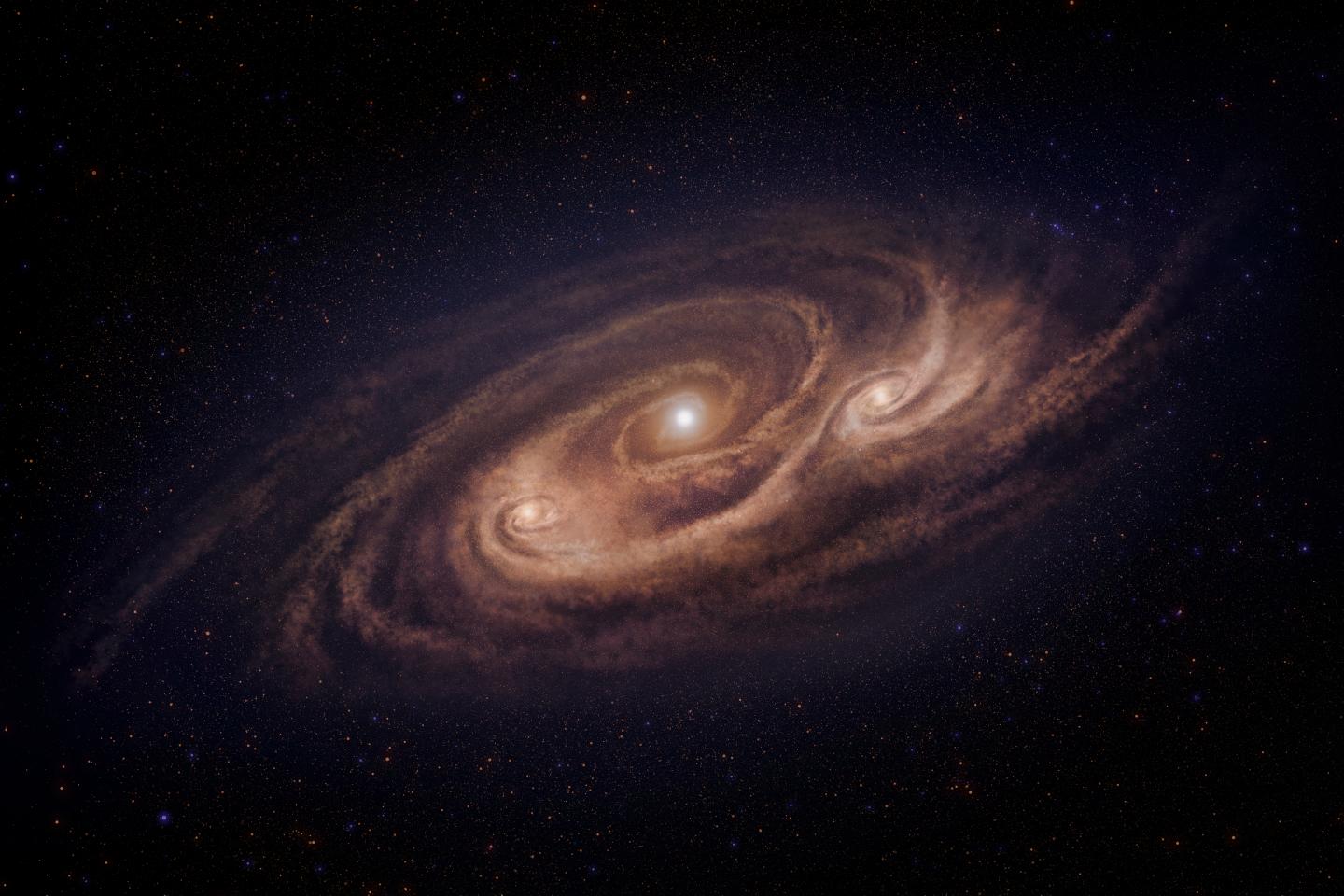This Ancient 'Monster' Galaxy Should Have Destroyed Itself

There's a monster out there. It's far away, buried deep in the past. But scientists can see it. And thanks to a new international imaging project, they've begun to understand it, too.
The monster is a galaxy that formed in the first billion years after the Big Bang. Astronomers call galaxies like this "monsters" thanks to their large size and blistering star-formation rates — features that have gone unexplained since they were discovered a decade ago, the researchers behind the project wrote.
What's more, the best theories available to astrophysicists suggest that this sort of galaxy shouldn't exist. Indeed, these monsters grew much larger and created way more stars than models of the early universe suggest is possible.
Even with this new project, published today (Aug. 29) as a research letter in the journal Nature, astronomers don't really understand what makes the monster studied here, named COSMOS-AzTEC-1, or its siblings tick. One challenge is that the galaxy is 12.4 billion light-years away from Earth, meaning that astronomers can see only how it behaved 12.4 billion years ago. And it takes up a tiny patch of sky thanks to that distance, so getting a quality image is difficult.
However, thanks to the efforts of a team from the National Astronomical Observatory of Japan, the University of Massachusetts Amherst and Mexico's Instituto Nacional de Astrofísica, researchers have a new picture of what the monster galaxy looks like and how it works, a picture that's 10 times higher-resolution than ever before. [101 Astronomy Images That Will Blow Your Mind]
"A real surprise is that this galaxy seen almost 13 billion years ago has a massive, ordered gas disk… instead of what we had expected, which would have been some kind of a disordered train wreck," co-author Min Yun, an astronomer at UMass Amherst who helped discover AzTEC-1 back in 2007, said in a statement.
Researchers suspect that just a billion years after the Big Bang, galaxies would be small and messy, Yun said. This latest imaging project reveals, however, that not only is AzTEC-1 a star-forming monster of inexplicable scale, but it's also a galaxy with a distinct, unusual and unstable orderliness.
Sign up for the Live Science daily newsletter now
Get the world’s most fascinating discoveries delivered straight to your inbox.
AzTEC-1, the researchers found, is a disk. But it's not a disk like the Milky Way, with a single thick core and spiral arms swirling outward. Instead, the monster's got three cores, or two additional, distinct clouds of stars orbiting many light-years away from the bigger cluster in the center. And unlike most modern galaxies, it's unstable.
The researchers reported that the sheer weight of the galaxy, from its huge cloud of gas, puts so much inward pressure on the monster's body that the outward pressure of its spin can't compensate. And the resulting gravitational collapse leads to the monster's rapid star formation.
What the researchers still can't explain, however, is how that huge gas cloud formed in the first place, they wrote in the research letter. In theory, the mass of the galaxy's gas should have caused the cloud to collapse on itself long before it grew into such a monster. But that didn't happen.
Originally published on Live Science.










